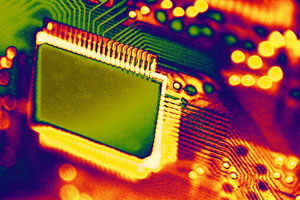Mobile IPTV
Feedsee Mobility : Mobile IPTV : Wireline network transforms from circuit switched to IP-based ultra-broadband networks
 At the Telco TV 2006 Conference and Expo, Motorola showcased a portfolio of solutions that work together to enable next-generation, experience based voice, video, and data services across wireless, optical and DSL networks - creating new revenue generating opportunities and helping carriers to deliver on the promise of IPTV. Motorola innovations for the network, the person, and the home brought video, voice, and data services to millions of subscribers worldwide wherever they wanted access - whether in their living room or in the palm of their hand. As the wireline network transformed from circuit switched to an ultra-broadband, IP-based architecture, Motorola technologies enabled carriers to deploy seamless anytime, anywhere services that take full advantage of these networks.
At the Telco TV 2006 Conference and Expo, Motorola showcased a portfolio of solutions that work together to enable next-generation, experience based voice, video, and data services across wireless, optical and DSL networks - creating new revenue generating opportunities and helping carriers to deliver on the promise of IPTV. Motorola innovations for the network, the person, and the home brought video, voice, and data services to millions of subscribers worldwide wherever they wanted access - whether in their living room or in the palm of their hand. As the wireline network transformed from circuit switched to an ultra-broadband, IP-based architecture, Motorola technologies enabled carriers to deploy seamless anytime, anywhere services that take full advantage of these networks.
The transformation of wireline networks from circuit-switched to an ultra-broadband, IP-based architecture has been a revolutionary shift in telecommunications. The transition involved several significant steps and technologies:
- Introduction of Digital Switching: The first big leap was from analog to digital switching. Digital systems allowed for more efficient use of the network infrastructure, better call quality, and introduced new services like call waiting, call forwarding, etc.
- Deployment of Packet Switching: The shift to packet-switched networks was the next big step. In contrast to circuit switching, where a dedicated path is established for the entire communication, packet switching divides data into smaller units, or packets, which can be transmitted independently and reassembled at the destination. This allowed for more efficient use of the network and served as the basis for IP-based communication.
- Integration of IP Technology: As the internet grew, so did the use of Internet Protocol (IP) for delivering various forms of communication. IP allows for the routing of packets of data from source to destination based on IP addresses. This introduced greater flexibility and efficiency, making it possible to transmit voice, data, and video over the same network.
- Adoption of Asynchronous Transfer Mode (ATM) and Frame Relay: These technologies were a bridge between circuit-switched and fully IP-based networks. They used packet-switching and multiplexing technologies but were ultimately suppleded by IP-based technologies.
- Introduction of DSL Technology: Digital Subscriber Line (DSL) technology boosted the bandwidth of copper telephone lines, providing a method of delivering high-speed internet access to homes and businesses and facilitating the growth of ip-based services.
- deployment of fiber optic cabling: fiber optics offer a significant increase in bandwidth capacity over copper lines, allowing for the high-speed, high-capacity transmission required for ultra-broadband services.
- development of protocols like voip: voice over ip (voip) became a key application that demonstrated the advantages of ip-based networks, such as lower cost, easier network management, and integration of voice with other ip-based services.
- shift to next generation networking (ngn): ngn is a broadband network with qos-enabled transport technologies. in ngn, multiple services like voice, data and multimedia are bundled, and provided as a single service. this led to the development of ip multimedia subsystem (ims) architecture to deliver consistent services, regardless of the underlying network technology.
- evolution to software defined networking (sdn) and network function virtualization (nfv): sdn and nfv technologies allow for the separation of the control and data planes in a network, providing increased flexibility, easier management, and the ability to deploy new services more quickly.
These innovations collectively allowed telecommunications networks to move from relatively inflexible, inefficient, circuit-switched architectures to highly flexible, efficient, IP-based ultra-broadband networks.